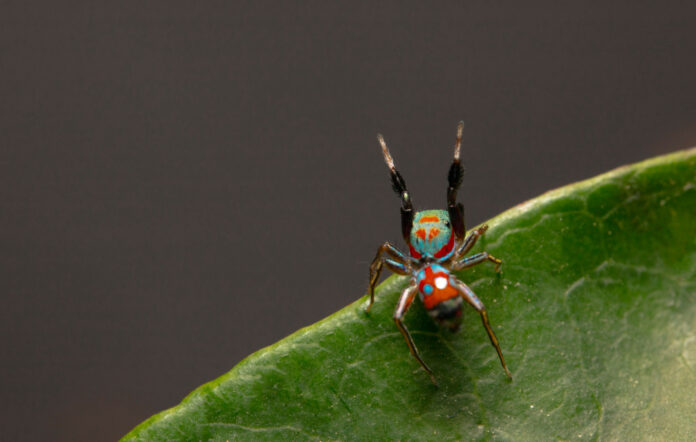Sometimes you have to fake it to make it.
Scientists from Peking University in China have discovered a spider species that does exactly that by mimicking the behavior of ants to avoid being eaten.
To pull off this thespian feat, the species, Siler collingwoodi, raises its front legs to resemble antennae, bobs its abdomen and lifts its legs high with each step to walk just like an ant.
Hua Zeng
In a study published in the journal iScience, the researchers found that this behavior puts off some would-be predators, particularly spiders that eat their own species. “The spider predator used in our study always preys with caution, as a random attack toward an ant-like animal may cause serious injury,” Hua Zeng, an ecologist at Peking University and first author on the study, told Newsweek.
Ants can be very aggressive towards predators, using their spiny defenses, sharp biting mandibles, and, in some cases, venom to fight back—it’s no wonder predators prefer to look for easier prey. But mimicking ants is not the only defense this tiny jumping spider has up its eight sleeves.
While the spider might move like an ant, its vibrant coloration allows it to blend seamlessly into its floral surroundings. “Rather than evolving a more ant-like coloration which makes a ‘perfect mimicry,’ the combination of color camouflage and ant-like locomotion may help Siler collingwoodi better survive in their habitat,” Zeng said.

Yuchang Chen
However, not all the spider’s potential predators are fooled by this elaborate act. In the study, the ant-mimicking spiders were presented to different predators alongside a non-mimicking type. Overall, the mimicking ants were less likely to be preyed upon, but their defenses held up better against some predators than others.
“Praying mantises turned out to launch an undifferentiated attack toward the ant-mimic spider prey and the non-mimetic spider prey,” Zeng said. “This is likely due to its absolute large body size compared to the ant and the candidate prey. After all, body size and strength are the main factors that matter in the process of animal interactions.”
Praying mantises are also essentially color-blind, meaning the spider’s camouflage would have gone unnoticed.
The spider’s brilliant coloration is most likely a result of years of evolution to adapt to their specific host plants. Whether their unusual behavior is genetic or learned is still unknown. Zeng said that the team were conducting a follow-up study to investigate this question.
Zeng said that the study provides the first quantitative demonstration of ant-mimicking behavior by this species. “Our study provides practical evidence of a small arthropod, combining multiple defensive strategies, i.e., color camouflage and locomotion mimicry, to protect itself from the predator, which increases the survivorship.”
References
Zeng and Zhao et al., Imperfect ant mimicry contributes to local adaptation in a jumping spider, iScience, May 17 2023, DOI: 10.1016/j.isci.2023.106747


